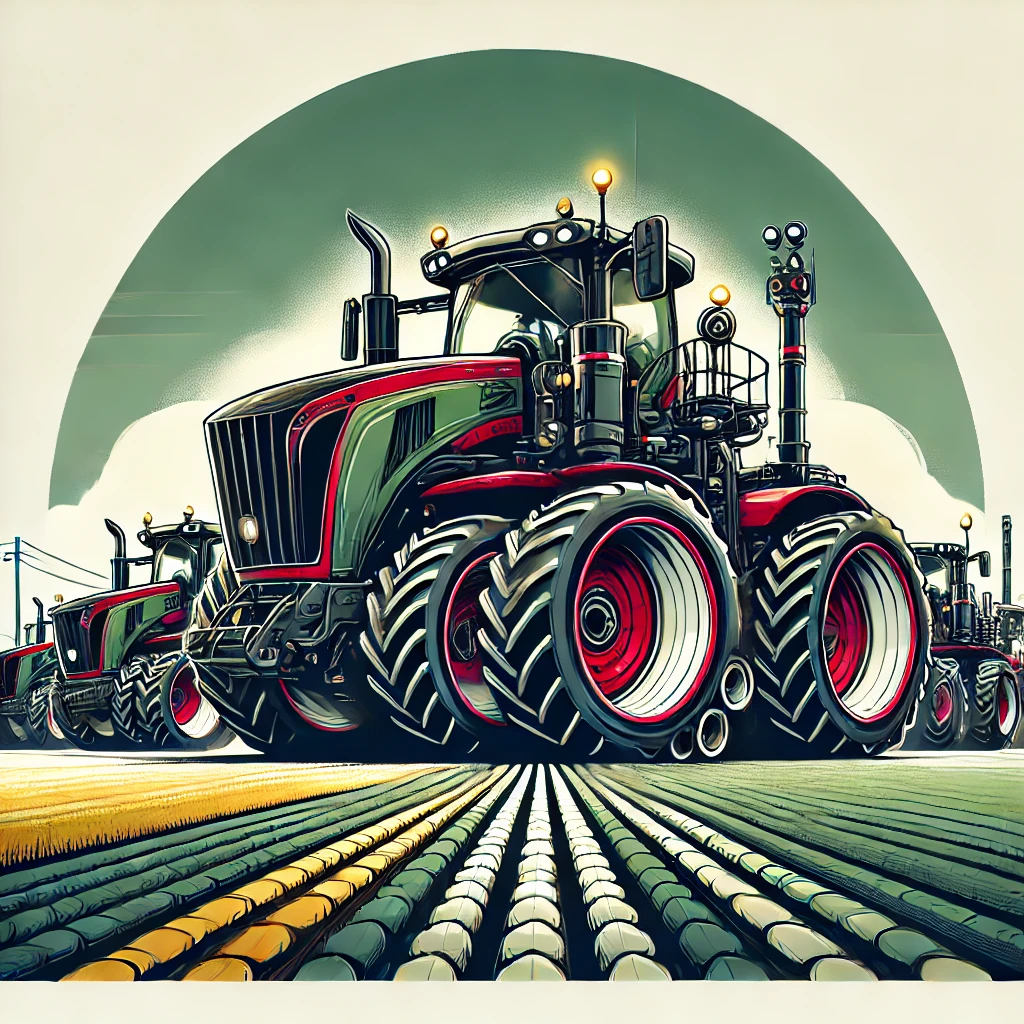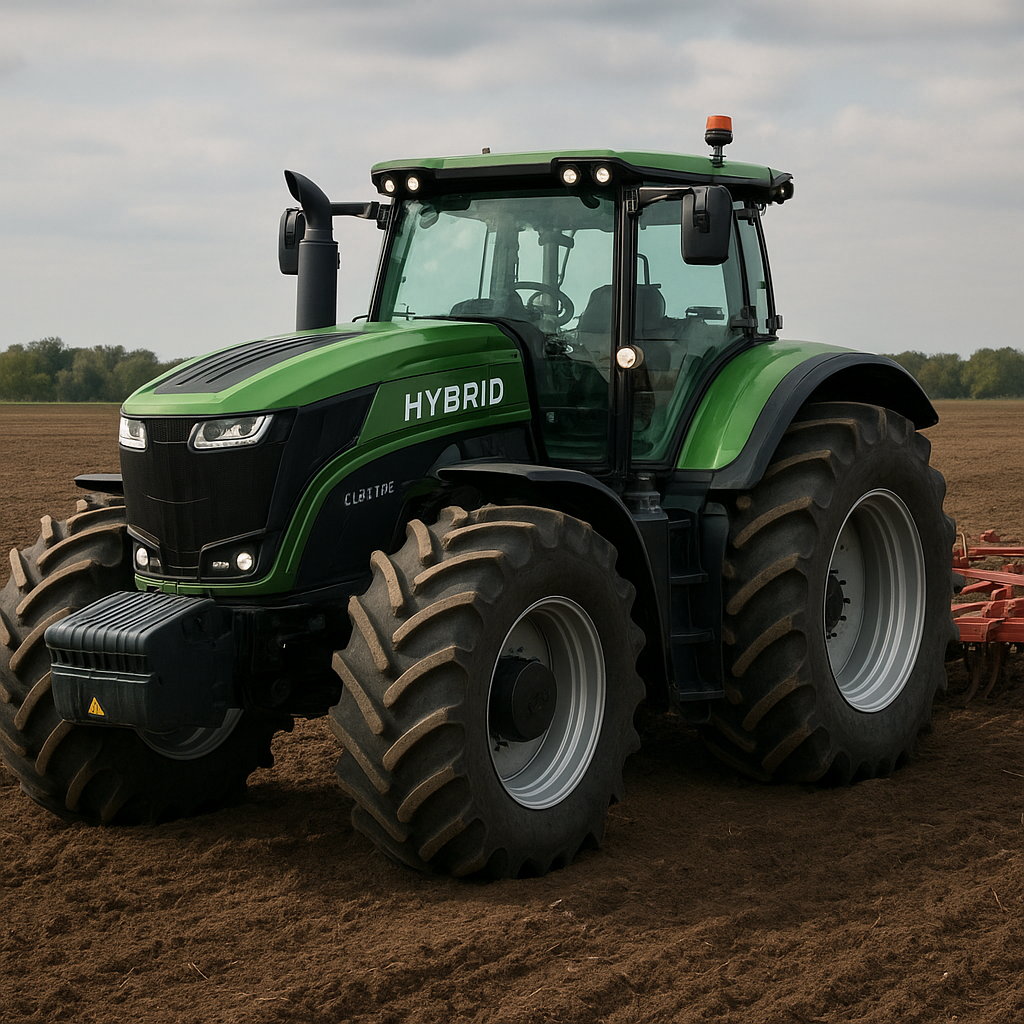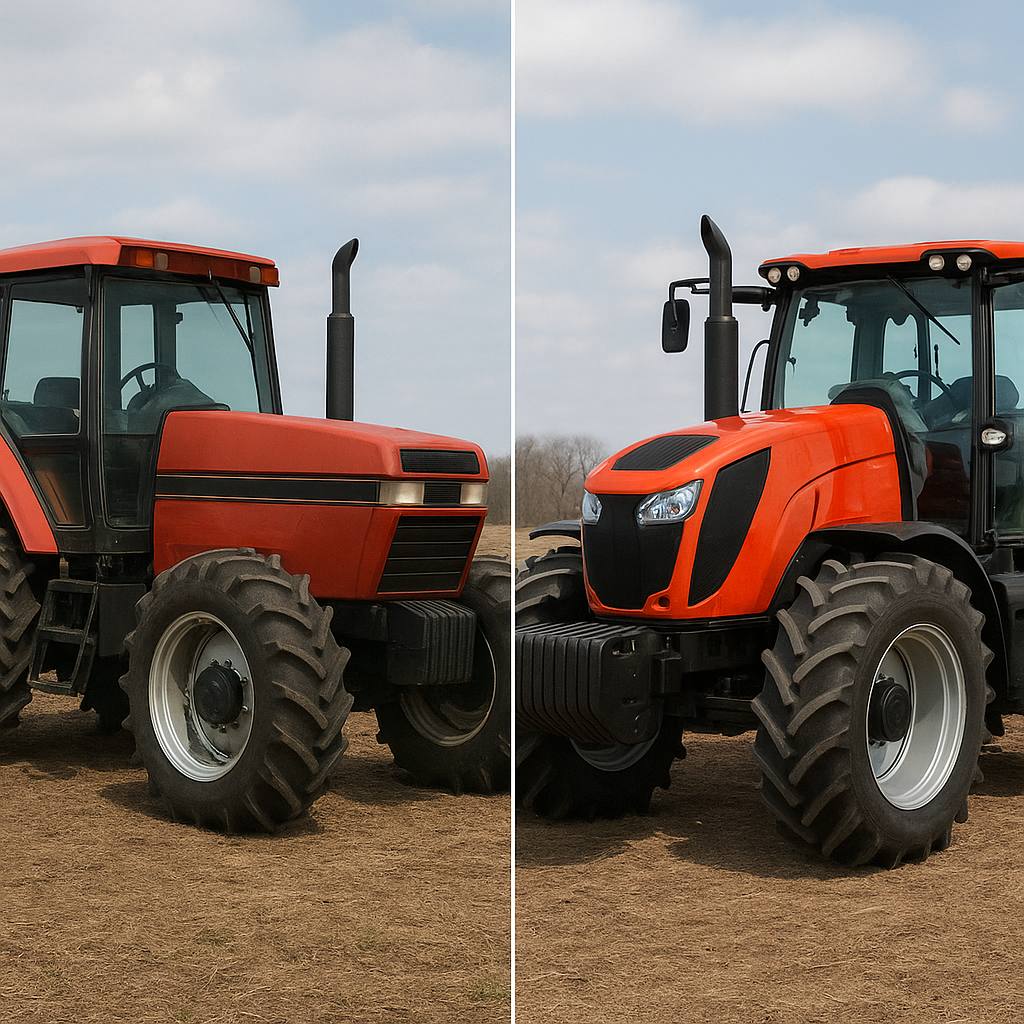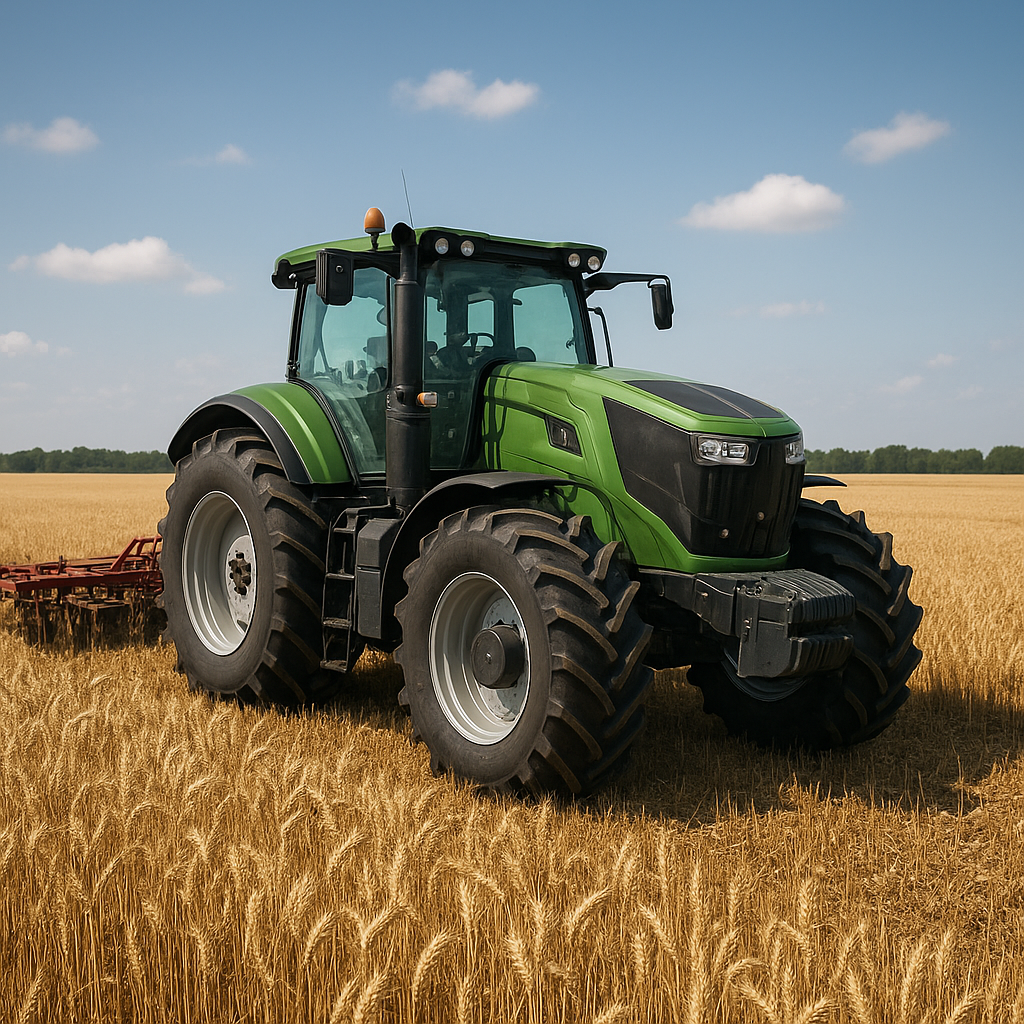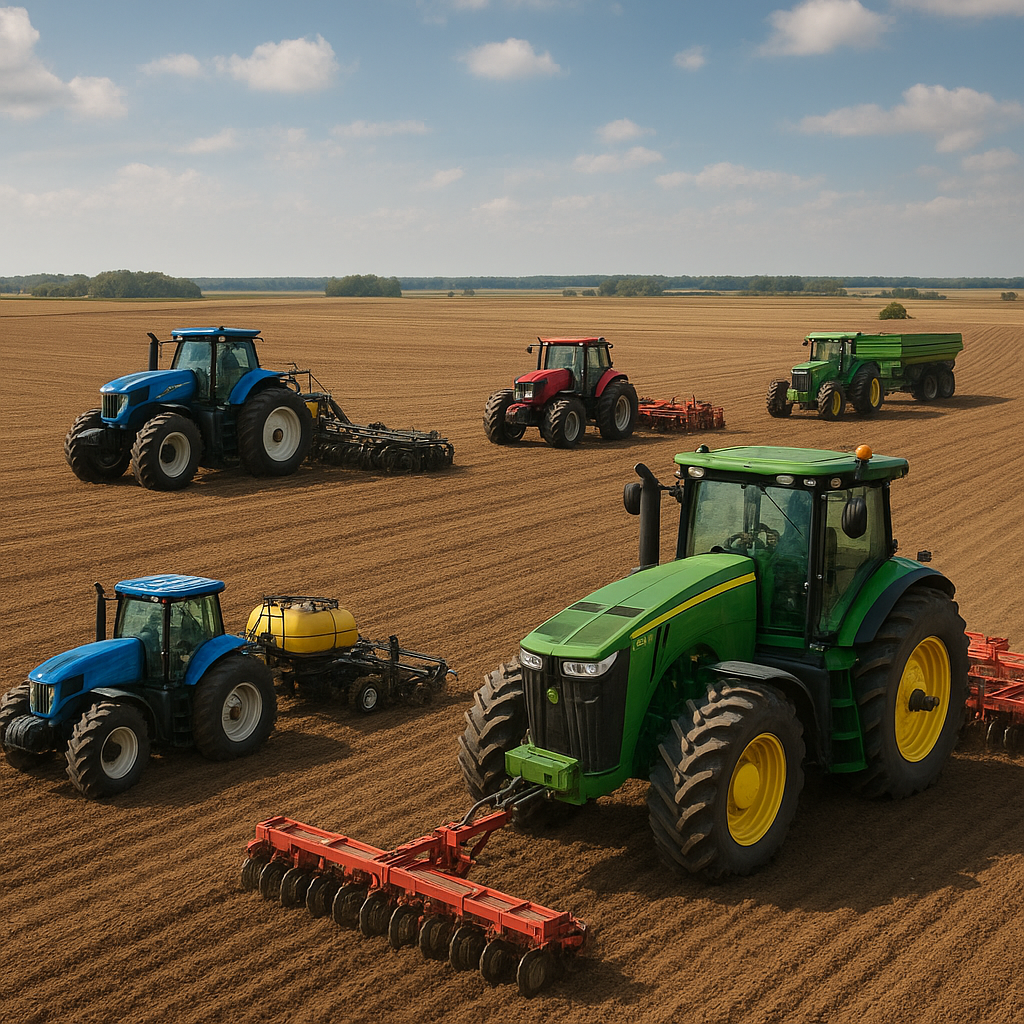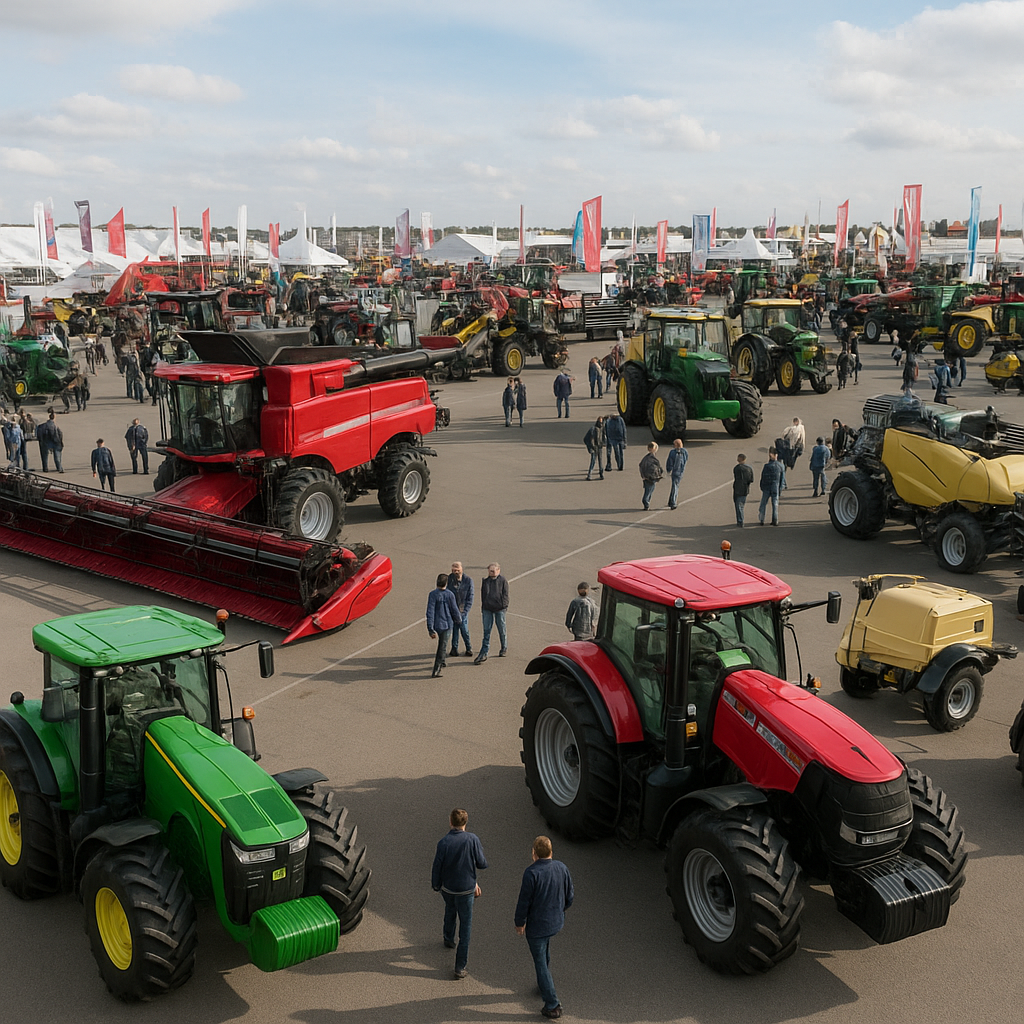Tractors are indispensable machines in modern agriculture, construction, and various other industries. They come in a variety of sizes and types, each designed to perform specific tasks efficiently. This article provides an overview of the different types of tractors and their uses, focusing on the biggest and most powerful models available today.
Types of Tractors
Tractors can be broadly categorized based on their size, power, and intended use. The main types include utility tractors, row crop tractors, orchard tractors, industrial tractors, and garden tractors. Each type has unique features and capabilities that make it suitable for specific tasks.
Utility Tractors
Utility tractors are versatile machines designed for general-purpose tasks. They are commonly used on small to medium-sized farms for plowing, tilling, and hauling. These tractors typically have a power range of 40 to 100 horsepower, making them suitable for a variety of agricultural activities.
Row Crop Tractors
Row crop tractors are specifically designed for planting, cultivating, and harvesting row crops such as corn, soybeans, and cotton. They are equipped with adjustable wheel spacing to accommodate different row widths and have high ground clearance to avoid damaging crops. These tractors usually have a power range of 100 to 300 horsepower.
Orchard Tractors
Orchard tractors are designed for use in orchards and vineyards. They have a narrow profile and low height to navigate between rows of trees and vines without causing damage. These tractors are typically equipped with specialized attachments for pruning, spraying, and harvesting. Their power range is usually between 40 to 100 horsepower.
Industrial Tractors
Industrial tractors are built for heavy-duty tasks in construction, mining, and other industrial applications. They are equipped with robust engines and heavy-duty frames to handle demanding tasks such as earthmoving, grading, and material handling. These tractors can have power ratings exceeding 500 horsepower.
Garden Tractors
Garden tractors are small, lightweight machines designed for residential use. They are ideal for mowing lawns, tilling gardens, and performing light landscaping tasks. These tractors typically have a power range of 15 to 30 horsepower.
The Biggest Tractors in the World
When it comes to sheer size and power, a few tractors stand out as the giants of the industry. These machines are designed to handle the most demanding agricultural and industrial tasks, often featuring cutting-edge technology and engineering.
Big Bud 747
The Big Bud 747 is widely regarded as the largest tractor in the world. Built in 1977 by Northern Manufacturing Company in Montana, USA, this behemoth boasts a 16-cylinder Detroit Diesel engine with a power output of 1,100 horsepower. The Big Bud 747 measures 27 feet long, 20 feet wide, and 14 feet tall, with a weight of over 100,000 pounds. It was designed for large-scale farming operations, capable of pulling massive plows and other heavy implements.
Case IH Steiger Quadtrac 620
The Case IH Steiger Quadtrac 620 is one of the most powerful and advanced tractors available today. It features a 12.9-liter, 6-cylinder engine producing up to 620 horsepower. The Quadtrac 620 is equipped with four independent tracks, providing exceptional traction and stability on various terrains. This tractor is ideal for large-scale farming operations, capable of handling tasks such as deep tillage, planting, and harvesting.
John Deere 9620RX
The John Deere 9620RX is another giant in the world of tractors. It features a 15-liter, 6-cylinder engine with a power output of 620 horsepower. The 9620RX is equipped with four tracks, providing excellent traction and reducing soil compaction. This tractor is designed for large-scale agricultural operations, capable of handling a wide range of tasks from tillage to planting and harvesting.
New Holland T9.700
The New Holland T9.700 is a powerful and versatile tractor designed for large-scale farming operations. It features a 12.9-liter, 6-cylinder engine producing up to 682 horsepower. The T9.700 is available with either wheels or tracks, allowing it to be customized for different terrains and applications. This tractor is ideal for tasks such as deep tillage, planting, and harvesting.
Technological Advancements in Modern Tractors
Modern tractors are equipped with a range of advanced technologies that enhance their performance, efficiency, and ease of use. These innovations have revolutionized the agricultural industry, making it possible to perform tasks more quickly and accurately.
GPS and Precision Farming
One of the most significant advancements in modern tractors is the integration of GPS technology. GPS allows for precision farming, enabling farmers to map their fields, monitor crop health, and apply inputs such as fertilizers and pesticides with pinpoint accuracy. This technology reduces waste, increases yields, and minimizes environmental impact.
Autonomous Tractors
Autonomous tractors are an emerging technology that promises to revolutionize the agricultural industry. These machines are equipped with advanced sensors, cameras, and artificial intelligence, allowing them to operate without human intervention. Autonomous tractors can perform tasks such as planting, tilling, and harvesting with high precision and efficiency, reducing labor costs and increasing productivity.
Telematics and Remote Monitoring
Telematics systems allow farmers to remotely monitor and manage their tractors in real-time. These systems provide valuable data on machine performance, fuel consumption, and maintenance needs, enabling farmers to optimize their operations and reduce downtime. Remote monitoring also allows for predictive maintenance, identifying potential issues before they become major problems.
Advanced Engine Technology
Modern tractors are equipped with advanced engine technology that improves fuel efficiency and reduces emissions. Features such as turbocharging, direct fuel injection, and exhaust gas recirculation help to maximize power output while minimizing environmental impact. These advancements make modern tractors more sustainable and cost-effective to operate.
Conclusion
Tractors are essential machines in agriculture and various other industries, with different types designed to perform specific tasks efficiently. The biggest tractors in the world, such as the Big Bud 747, Case IH Steiger Quadtrac 620, John Deere 9620RX, and New Holland T9.700, showcase the incredible power and capabilities of modern agricultural machinery. Technological advancements, including GPS, autonomous operation, telematics, and advanced engine technology, continue to enhance the performance and efficiency of these machines, driving the agricultural industry forward.
